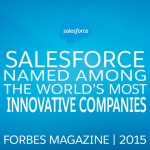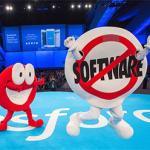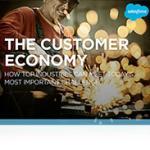
Even if you’re not a fan of science fiction, you may have heard a famous quote from William Gibson, a Canadian author who once said: “The future is already here. It’s just not evenly distributed.” It’s an idea that rings true even more loudly if you’re talking about the future of work and SMBs.
Perhaps because of differences in resources—or just the speed at which technology changes—the way large enterprises organize and empower their staff may sometimes seem like The Jetsons compared with smaller or medium-sized firms. No matter how you define “the future of work,” it’s probably easy to imagine people working faster, more autonomously and more productively thanks to advances in IT.
The question is, how do you get there without stretching your budget to the breaking point, and avoid any painful process changes along the way? It may not be easy as 1, 2, 3, but here are at least three ways to break it down.
1. Reverse-Engineer Work As It Is Today
Few firms proactively establish a “future of work” strategy. More often, there is a particular trigger or tipping point that requires companies to rethink their traditional approach to getting things done. This could be shifts in the way their customers prefer to receive information—like moving from paper-based to digital sources of content, for example. Sometimes there are competitive threats, such as the move to offering services from a mobile device rather than a physical location or over the phone.
Though some organizations manage to respond to such things relatively quickly, they are inevitably in “catch-up” mode compared with firms who have more foresight into how technology could improve their internal and customer-facing methods of interacting.
Avoid this problem by following the example of R&D departments, who sometimes “reverse-engineer” or take a competitor’s product apart in order to understand how it functions. In this case, reverse-engineer your own organization and look at some of the following areas:
- What are the most critical steps that help the company achieve its business objectives—selling to a customer, for example, or bringing on a new employee. What areas of work deserve attention?
- What are the biggest barriers or impediments that make these steps longer than desirable, or add complexity? Do some free-form association with your team or leadership.
- What would the ideal future look like, based on the technology that’s available on the market today? This could include cloud-based applications, mobile devices, analytics and more.
Once this is mapped out, prioritizing and looking at what can be done in a phased approach becomes much more feasible.
2. Create A ‘Future Of Workback’ Schedule
You don’t need a certification in project management to know about workback schedules. For any initiative that involves multiple departments, a key client deliverable or a longer-term investment, workbacks help detail the granular tasks that get the team from A to B, with the owner of each task clearly named next to due dates.
What makes the move towards “the future of work” so overwhelming, in many cases, is that it lacks this kind of breakdown. For SMBs that don’t have their own IT department, implementing digital tools becomes haphazard and unwieldy if they don’t have some kind of workback, even if it’s just a simple spreadsheet.
Consider a workback like this one, which is based on a move to offer the sales team cloud-based CRM via their mobile phones. Some of the tasks in a workback to make this future a reality might be:
a) Inventory of existing mobile devices across the team (if not company-issued)
b) Overview of the planned deployment with key stakeholders and FAQs
c) Scheduling check for team members out of office or absent on a client engagement during the deployment period
d) Identification of a pilot group and dates for initial deployment and training
e) Date for feedback from pilot group and any tweaks to phased deployment strategy
f) Team review on initial usage and suggestions for improvements in phase two.
Of course, your actual workback could be much more involved and may be developed in collaboration with your key suppliers, but this will bring the future of work closer than ever before.
3. Go Back To ‘The Future’ Frequently
To anyone employed in the days when typewriters still sat on most desks, the future arrived a long time ago. But much like the advent of personal computers, the rise of the cloud, apps and analytics doesn’t tend to transform businesses across the board at once. It’s a series of incremental and iterative changes that make a meaningful difference.
As you experiment these tools, consider how you can integrate or align them with other ways you measure business success, such as:
- Performance reviews: Whether it’s part of a formal evaluation or even self-evaluation, how does the introduction of new technology contribute to a more engaged working experience for your employees? Have them rate their comfort level on a sliding scale and offer room for comments on other tools they’d like to see deployed.
- Customer support enquires: A lower volume of questions or complaints may be attributable to the ability for more employees to address issues while outside the office. Try to identify changes based on when and how technology was introduced.
- Revenue: Once you’ve achieved return on investment with technology —whether it’s reduced costs or increased productivity—it’s time to revisit that reverse-engineering discussion you held at the beginning. How is the most critical work being done now, and what is the “before” and “after” picture in terms of those barriers and pitfalls?
Even if you improve business processes with one IT investment at a time—and many do—a strategic and disciplined approach will make each transition a little easier. Welcome to the future.























